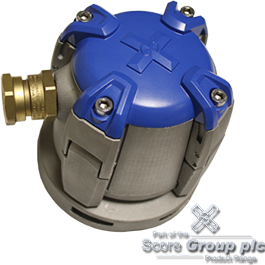
 Valve Leak Detection Equipment / Valve Condition Monitoring Equipment
Valve Leak Detection Equipment / Valve Condition Monitoring Equipment

A. Valve sizes from ½" to 50" NB can be monitored
A. All types of valves which have an isolating function capability can be tested, including :-
A. See Technical Specifications here : Click here for more information
A. When used with our V-MAP G3 software this gives a graphic user interface providing visual indication (and this can be connected to audible alarms if required) of valve performance in accordance with the set acceptance criteria parameters. The visualisation of performance is facilitated by a traffic light system. This can also be connected directly into the Site Automation System to provide and easy "leak" or "No leak" guide to you critical valve performance.
A. The traffic light system built into the software is designed to act as a performance indicator as follows:
Note: Users set "acceptable limits / thresholds" (i.e. it these are user dependant/selectable) and Score Group accept no responsibility for the limits set by any end user.
A. No – there is a threshold of leak detection. Very small leaks (less than 0.1 litres / min) may not be detected, because they do not make enough noise.
Note: All leak detection methods (such as pressure build up tests or looking for visible leakage) have a threshold of detection and uncertainty attached to the result.
A. See case studies at : Click here for more information
A. When monitoring valves, the user needs to know if the valve is working on a gas, liquid or steam fluid line. Once known, this allows the correct fluid type to be selected in the management software, to facilitate the automated leak rate calculation.
A. A valve must be in the closed position to carry out an AE leak detection survey. When the valve is closed, there will be no fluid flow, therefore the valve and piping will act as a separator. From the valve orientation, it can be determined if any leakage could be on gas or liquid during the commissioning phase and installation of the sensors by fully certified / trained Score personnel.
A. The valve being tested must have isolating capability, it must be in the fully closed position and a differential pressure must exist across the seat to seal interface. This differential pressure must be 1 bar or greater, pressures of 10 bar and over provide more favourable results with regards to quantification. The Acoustic Emissions (AE) Sensor on the front of the MIDAS® Sensor must be in direct contact with the metallic surface of the valve.
A. MIDAS® Sensor detects acoustic emissions in the frequency range 60kHz to 600kHz. The human hearing range only extends up to 20kHz, so when you can hear noise, then you should have no worries about this interfering with your measured results, as it is in a different frequency range. MIDAS® Sensor does not detect noise below 60 KHz. Concerns about background noise levels usually come from experiences of using lower frequency ultrasonic devices which have been seen in the past to give inconclusive results, since they pick up all low frequency noise (such as vibration and rotating equipment like pumps, bearings etc.), thus masking the high frequency signal that is generated by the leak path.
A. Yes, whilst the sensor has been designed for standalone valve leak monitoring, it has also been designed for seamless integration into existing and new plant control systems, including bespoke valve monitoring systems such as Score’s market leading V-MAP® G3 system (click here).
A. MIDAS® sensor is designed to work seamlessly with wireless communication devices which can handle its standard 4-20 mA output signal. Options for this can be offered on request.